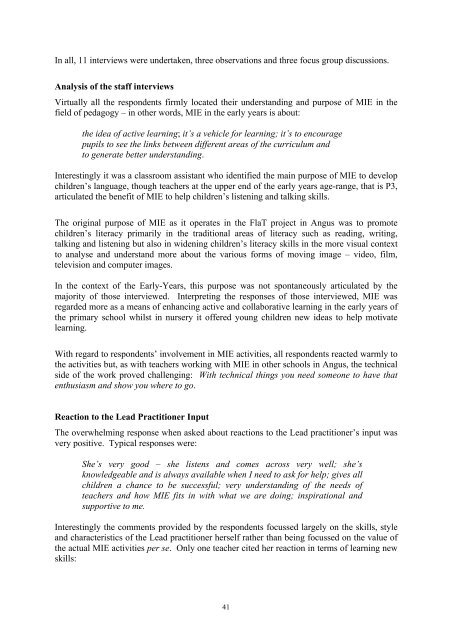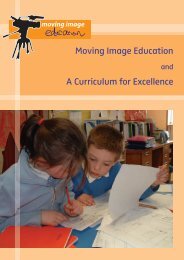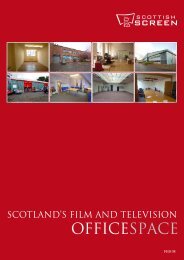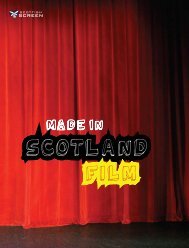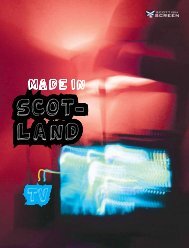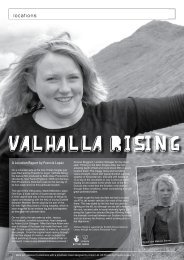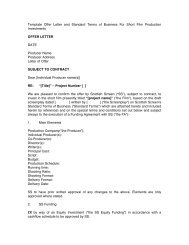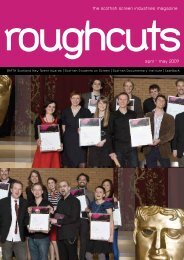Evaluation - Scottish Screen
Evaluation - Scottish Screen
Evaluation - Scottish Screen
Create successful ePaper yourself
Turn your PDF publications into a flip-book with our unique Google optimized e-Paper software.
In all, 11 interviews were undertaken, three observations and three focus group discussions.<br />
Analysis of the staff interviews<br />
Virtually all the respondents firmly located their understanding and purpose of MIE in the<br />
field of pedagogy – in other words, MIE in the early years is about:<br />
the idea of active learning; it’s a vehicle for learning; it’s to encourage<br />
pupils to see the links between different areas of the curriculum and<br />
to generate better understanding.<br />
Interestingly it was a classroom assistant who identified the main purpose of MIE to develop<br />
children’s language, though teachers at the upper end of the early years age-range, that is P3,<br />
articulated the benefit of MIE to help children’s listening and talking skills.<br />
The original purpose of MIE as it operates in the FlaT project in Angus was to promote<br />
children’s literacy primarily in the traditional areas of literacy such as reading, writing,<br />
talking and listening but also in widening children’s literacy skills in the more visual context<br />
to analyse and understand more about the various forms of moving image – video, film,<br />
television and computer images.<br />
In the context of the Early-Years, this purpose was not spontaneously articulated by the<br />
majority of those interviewed. Interpreting the responses of those interviewed, MIE was<br />
regarded more as a means of enhancing active and collaborative learning in the early years of<br />
the primary school whilst in nursery it offered young children new ideas to help motivate<br />
learning.<br />
With regard to respondents’ involvement in MIE activities, all respondents reacted warmly to<br />
the activities but, as with teachers working with MIE in other schools in Angus, the technical<br />
side of the work proved challenging: With technical things you need someone to have that<br />
enthusiasm and show you where to go.<br />
Reaction to the Lead Practitioner Input<br />
The overwhelming response when asked about reactions to the Lead practitioner’s input was<br />
very positive. Typical responses were:<br />
She’s very good – she listens and comes across very well; she’s<br />
knowledgeable and is always available when I need to ask for help; gives all<br />
children a chance to be successful; very understanding of the needs of<br />
teachers and how MIE fits in with what we are doing; inspirational and<br />
supportive to me.<br />
Interestingly the comments provided by the respondents focussed largely on the skills, style<br />
and characteristics of the Lead practitioner herself rather than being focussed on the value of<br />
the actual MIE activities per se. Only one teacher cited her reaction in terms of learning new<br />
skills:<br />
41


